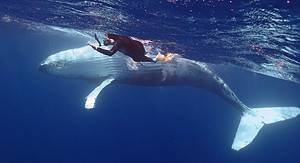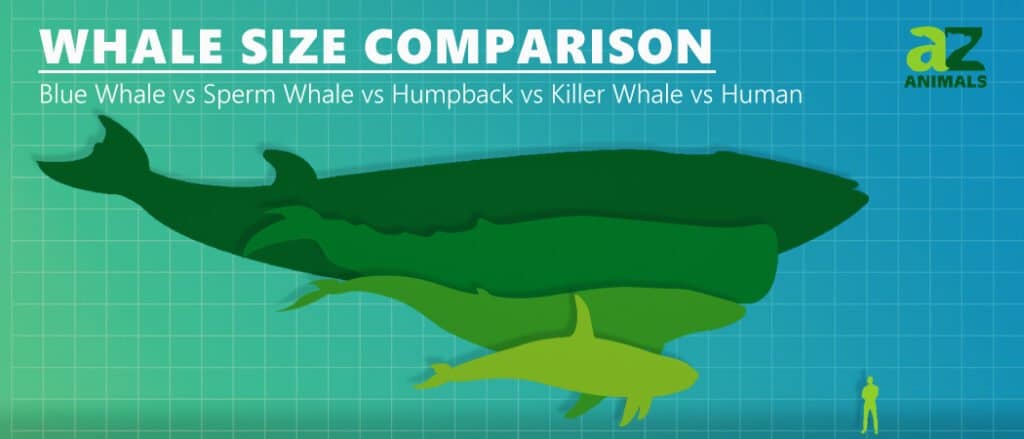
For an animal that can either be smaller than some types of sharks or the largest animal in the entire world, it can be difficult to wrap your head around just how big different types of whales are – which is where a whale size comparison guide comes in handy.
From whales the size of three school buses to whales not much bigger than your average human, we’ve created this complete guide to show you how big some of the largest (and the smallest) whales compared to each other as well as to the average human.
How Big are Whales?
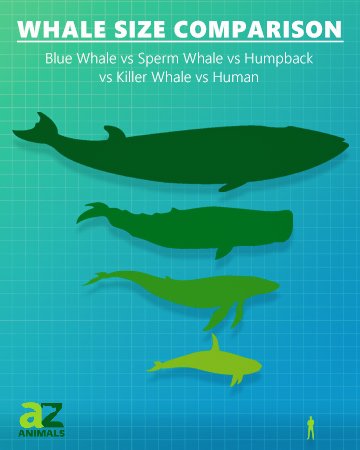
When it comes to whales as a whole, they’re pretty diverse in size. Whales can be as small as 8.5 feet and around 300 pounds or as large as nearly 100 feet and weigh more than 160 tons. They also hold quite a few records, including the largest toothed predator and the largest animal ever.
Each whale is unique in its own way and distinctly different from other whales. However, when you’re trying to decide which type of whale is bigger, it can be difficult to wrap your head around an animal so diverse.
This whale size comparison guide aims to help you understand just how big different types of whales are in comparison to each other and even humans.
Blue Whale Size
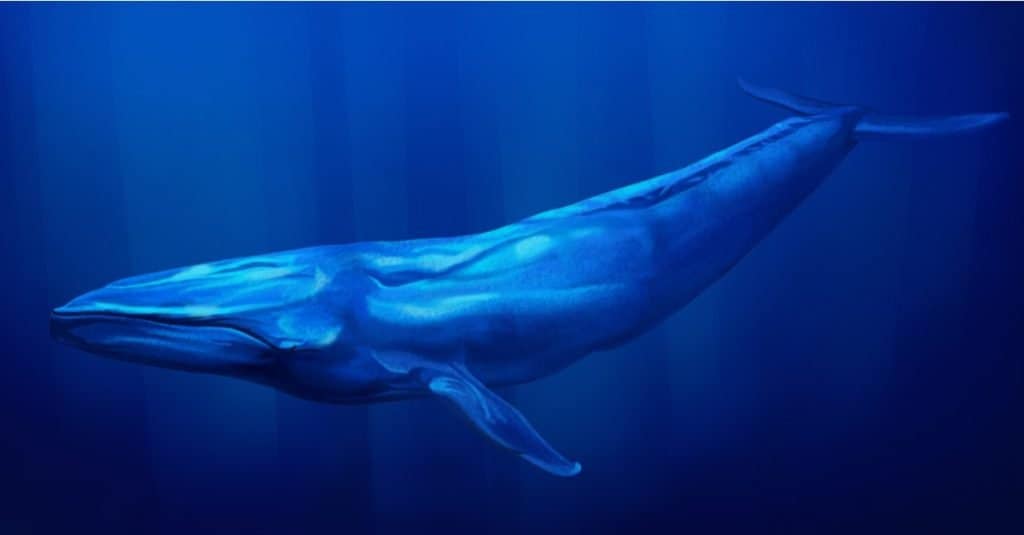
Blue whales are the largest animals in the entire world!
©Atomic Roderick/Shutterstock.com
Just like there are many different types of whales, there’s also several subspecies of blue whale. In recent years, there’s been quite a debate on what exactly makes a blue whale a blue whale, and it’s a debate that continues to happen today. However, as of the writing of this whale size comparison, there are currently five recognized subspecies. These include
- Antarctic blue whales (Balaenoptera musculus intermedia)
- North Atlantic and North Pacific blue whales (Balaenoptera musculus musculus)
- Pygmy blue whales (Balaenoptera musculus brevicauda)
- Northern Indian Ocean blue whales (Balaenoptera musculus indica)
- South Pacific Ocean blue whales (Balaenoptera musculus unnamed species).
The Antarctic blue whales aren’t just the largest blue whale or even just the largest whale – they’re the largest animal in the entire world! They’re even bigger than most of the dinosaurs we know about. They’ve been known to weigh up to 330,000 pounds (165 tons), which is more than the entire Statue of Liberty. The largest blue whale ever ever recorded weighed 418,878 pounds!
The Pygmy blue whale, however, is the smallest blue whale. However, reaching up to nearly 80 feet long, it’s still one of the largest animals around! They weigh around 116,000 pounds, which is the same as about 58 tons.
Sperm Whale Size
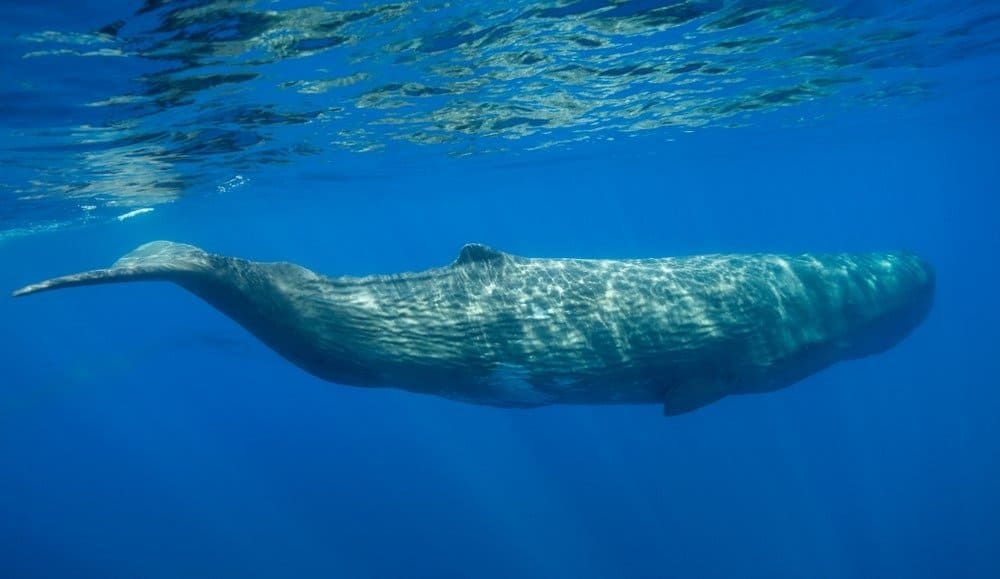
A
sperm whale’s
head can make up to 33 percent of its entire body!
©wildestanimal/Shutterstock.com
While sperm whales might not be the largest animal in the world, they are the largest toothed predator and can come in a variety of sizes.
There are three types of sperm whales still alive in the sperm whale family, though they don’t all share a genus. This includes the sperm whale (Physeter macrocephalus) as well as the pygmy sperm whale (Kogia breviceps) and the dwarf sperm whale (Kogia sima).
The largest sperm whales can reach up to 68 feet in length and weigh over 174,000 pounds. In contrast, the pygmy sperm whale only reaches a size of 11 feet and around 900 pounds. The dwarf sperm whale, which is the smallest in this family, only reaches around 9 feet and won’t grow heavier than 600 pounds.
It can take up to 290 dwarf sperm whales to equal the same weight as the typical sperm whale, which weighs around the same as two 18-wheeler transport trucks.
Most of the sperm whale’s size and weight come from their head, which can make up as much as 33 percent of their body. In fact, that’s what their species name means, with “macro” referring to large size and “cephalus” referring to the head.
Humpback Whale Size
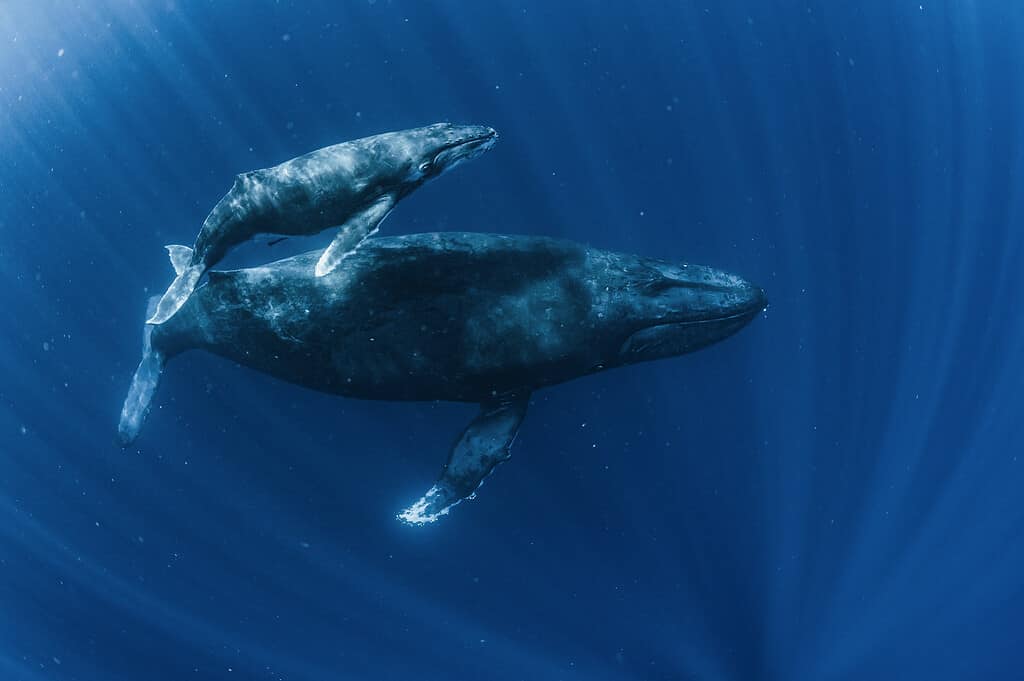
Humpback whales are known for visiting the surface and surprising whale watchers.
©iStock.com/inusuke
Whale watchers will know this whale well. Known for breaching and other attention-grabbing antics on the surface, humpback whales are one of the most well-known whale types out there. It’s also one of the biggest whales outside of the blue whale family.
Surprisingly, female humpback whales are slightly larger than their male counterparts – a not unheard of but uncommon occurrence among mammals. The largest one encountered so far had an overall length of 62 feet – that’s 8 times are long as the average artificial Christmas tree. Her pectoral fins alone were 20 feet long, or half the length of a telephone pole.
However, on average, the maximum length for humpback whales ranges from 46 to 52 feet. They can reach an average maximum weight of 80,000 pounds, which is around the same weight as a firetruck.
Killer Whale Size
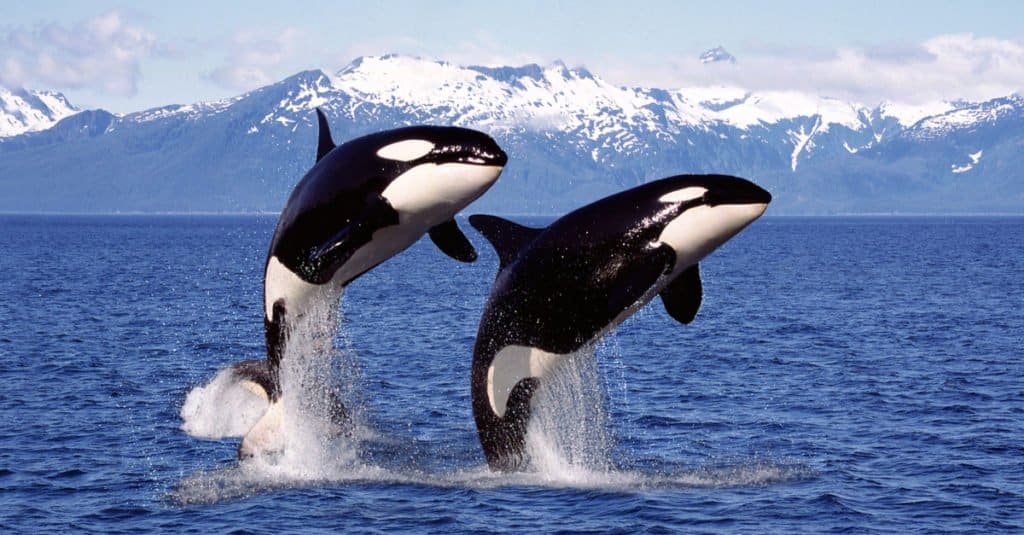
Killer whales
are also known as orcas.
©slowmotiongli/Shutterstock.com
The killer whale is another toothed predator, though it’s not nearly as large as the sperm whale. Males are larger than females and tend to only grow up to 26 feet long and weigh up to 12,000 pounds. This weight, which is just a little less than a helicopter, makes them 13 times larger than the pygmy sperm whale.
The largest killer whale ever recorded weighed about 22,000 pounds and measured 32 feet in length!
The male killer whale’s dorsal fins are nearly double the size of their female counterparts and can grow up to 5.9 feet tall. This means that if you were to stand on their back, their dorsal fin would likely be taller than you!
Human Vs Whale Size Comparison
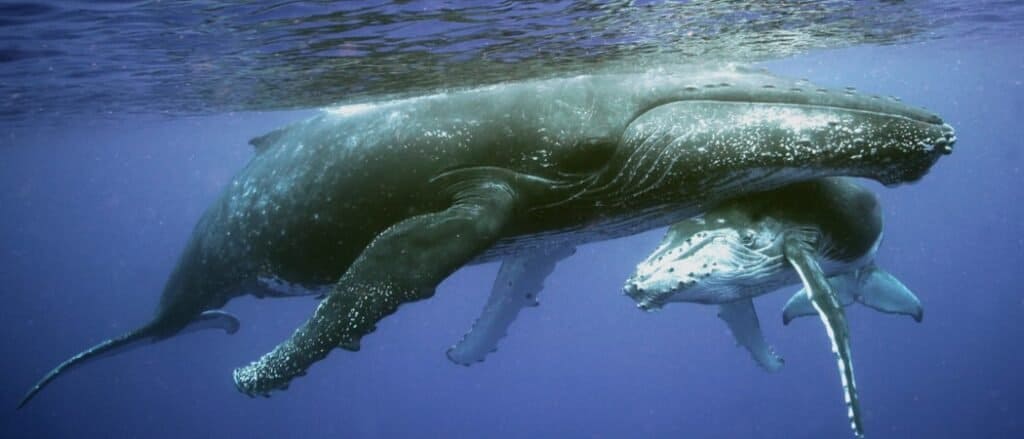
Both whales and humans are mammals, although we don’t even come close in size!
©Achimdiver/Shutterstock.com
So how do these whales measure up to a human?
Even next to one of the smallest whales, the dwarf sperm whale, humans still don’t compare. Even at the lower end of their size range, these whales are around 8 to 8.5 feet long at 400 pounds. The tallest person alive, Sultan Kösen, is only 8.2 feet tall for reference and only weighs around 300 pounds.
As for the Antarctic blue whale, just their heart is large enough for a human to live in. Their hearts can weigh up to 400 pounds (the same as a small sperm whale) and can be as large as a bumper car. Many museums even have replicas that humans can crawl through and explore.
Humpback whales have some of the largest pectoral fins in the sea. At around 20 feet long, they’re nearly 4 times the height of the average human. Although, you don’t need to worry too much about them swallowing you whole because, at rest, their throat is only around the size of your fist, and it doesn’t get much bigger than that.
While killer whales may not have the largest teeth in the ocean, their teeth can still grow to around 3 inches long. The average human’s is only 0.4 inches, making the killer whale’s teeth almost exactly ten times longer.
The photo featured at the top of this post is © Tomas Kotouc/Shutterstock.com
Thank you for reading! Have some feedback for us? Contact the AZ Animals editorial team.





